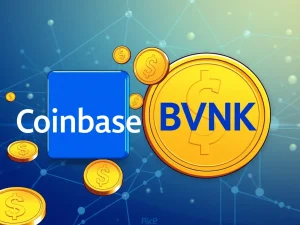Essential Guide: How to Read a Stablecoin Attestation Report & Verify Crypto Reserves

In the fast-evolving world of cryptocurrency, stablecoins act as a vital bridge connecting traditional finance and the decentralized digital economy. But how do you ensure these digital dollars are truly stable and backed by real assets? The answer lies in understanding the stablecoin attestation report. Think of it as a health check for your stablecoins, offering a glimpse into the reserves that supposedly back each token.
Why Understanding a Stablecoin Attestation Report is Absolutely Crucial?
Imagine holding a digital token that promises to be worth one US dollar. What gives you confidence in this promise? A stablecoin attestation report is your primary tool for verifying if that promise holds true. It’s not just about numbers; it’s about trust and transparency in a space that demands both. These reports are issued by independent third-party auditors, like certified public accountant (CPA) firms, providing an unbiased assessment of a stablecoin issuer’s reserves.
Here’s why these reports matter:
- Verification of Reserves: Attestations confirm whether a stablecoin issuer actually holds the assets they claim are backing their tokens.
- Transparency and Trust: Regular reports build confidence among users, investors, and regulators, fostering a healthier crypto ecosystem.
- Risk Mitigation: By understanding these reports, you can identify potential risks and make informed decisions about which stablecoins to use or hold.
- Regulatory Compliance: As regulations tighten, attestations demonstrate an issuer’s commitment to compliance and best practices.
Attestation vs. Audit: Spotting the Key Differences in Crypto Verification
It’s important to clarify that a stablecoin attestation report is not the same as a full audit. While both are forms of verification, they differ in scope and depth. Think of an attestation as a snapshot at a specific moment in time, confirming specific facts, such as whether reserves match the circulating supply on a particular date. An audit, on the other hand, is a more comprehensive examination of an organization’s financial processes and controls over a period.
Key Differences Summarized:
| Feature | Attestation | Audit |
|---|---|---|
| Scope | Narrow, point-in-time verification of specific claims (e.g., reserves vs. supply). | Broad, in-depth examination of financial statements and internal controls over a period. |
| Depth | Snapshot verification; less detailed. | Comprehensive assessment; more detailed. |
| Purpose | To provide reasonable assurance on specific assertions. | To provide an opinion on the fairness of financial statements. |
| Frequency | Often periodic (e.g., monthly). | Typically annual. |
While attestations are valuable for regular monitoring of stablecoin reserves, users should still conduct broader due diligence and not rely solely on these reports for a complete picture of a stablecoin’s risk profile.
Decoding a Stablecoin Attestation Report: What to Look For?
Ready to dive into a crypto attestation report? Here’s a step-by-step guide to help you navigate and understand the key components:
- Report Date is Key: Always check the date the report covers. Attestations are point-in-time, meaning they only verify reserves on that specific date. For example, a report dated February 28, 2025, only confirms reserves as of that day.
- Circulating Supply vs. Reserves – The Critical Comparison: Locate the figures for the total number of stablecoins in circulation and the total value of the stablecoin reserves. Ideally, reserves should be equal to or greater than the circulating supply. A shortfall here is a major red flag.
- Composition of Reserves – What Backs Your Stablecoin?: Examine the types of assets held in reserve. Look for safe, liquid assets like cash, US Treasury bills, or short-term government bonds held in regulated financial institutions. Be wary of vague descriptions or riskier asset types.
- Custodian and Asset Details – Where is the Money Kept?: Identify who is holding the reserves (custodians). Reputable custodians, such as well-known banks or established money market funds, add credibility. Also, check the location where these assets are stored.
- Methodology Matters – How Was Verification Conducted?: A good report will detail the methodology used for the verification. This includes the data sources, systems, and standards (like AICPA criteria) followed by the accounting firm.
- Excluded Tokens – Understanding What’s Not Counted: Some stablecoins issue tokens that are not redeemable or actively circulating (e.g., test tokens, time-locked tokens). These should be excluded from reserve calculations. Look for notes explaining these exclusions.
- The Attestor’s Credibility – Who Signed Off?: Verify the identity and reputation of the accounting firm that performed the attestation. Recognized firms like Deloitte or Grant Thornton lend more weight to the report. If the attestor is not disclosed or lacks independence, exercise caution.
- Supplementary Notes – Digging Deeper: Don’t skip the fine print! Check for supplementary notes that may provide additional context, such as the jurisdiction of reserve accounts, any legal encumbrances on assets, or details about valuation methods.
USDC Attestation: Setting a Benchmark for Crypto Transparency
USDC, issued by Circle, is often cited as an industry leader in transparency, particularly when it comes to crypto attestation. Circle regularly publishes attestation reports conducted by reputable firms like Deloitte. These reports consistently demonstrate that USDC reserves are equal to or exceeding the circulating supply.
For example, the February 2025 USDC attestation report confirmed that as of February 28, 2025, the circulating USDC was approximately $56.28 billion, while the fair value of reserves was $56.35 billion. The reserves were held primarily in US Treasury securities, Treasury repurchase agreements, and cash at regulated financial institutions. This level of detail and consistent reporting sets a high standard for other stablecoin issuers.
Verifying Stablecoin Reserves: The Process Behind the Report
How are stablecoin reserves actually verified? The process involves a rigorous examination by independent accounting firms and typically includes these steps:
- Bank Statement Reviews: Auditors examine bank statements and other financial records provided by the stablecoin issuer.
- Custodian Confirmation: They directly confirm cash balances held by custodians, ensuring the issuer’s claims are backed by third-party verification.
- Cross-referencing Documentation: Auditors cross-check reported reserves with various forms of third-party documentation to ensure consistency and accuracy.
- On-chain Supply Verification: They compare the reported supply of stablecoins with on-chain data to confirm the circulating amount.
These procedures are designed to provide reasonable assurance that the reported reserves are not only sufficient but also liquid and accessible when needed for redemptions.
Consequences of Reserve Mismatches: When Attestations Raise Red Flags
What happens if a stablecoin attestation report reveals that an issuer doesn’t have enough reserves to back its tokens? The repercussions can be significant:
- Regulatory Scrutiny: Issuers may face investigations and penalties for non-compliance with financial regulations.
- Market Sell-offs: Loss of confidence can trigger mass redemptions, leading to a potential ‘bank run’ on the stablecoin.
- Price Instability: The stablecoin may lose its peg to the fiat currency it’s supposed to track, causing significant market disruption.
The ongoing scrutiny faced by Tether (USDT) regarding the transparency of its reserves highlights the importance of robust and clear attestations. Lack of transparency breeds speculation and can lead to market instability.
Limitations of Attestation Reports: Knowing What They Don’t Tell You
While stablecoin attestation reports are valuable tools, it’s crucial to understand their limitations:
- Point-in-Time Verification Only: Reports are snapshots valid only for a specific date. They don’t guarantee future solvency.
- No Forward-Looking Guarantees: Attestations don’t predict future financial health or operational risks.
- Limited Operational Insight: They typically don’t cover broader operational risks such as hacking, internal mismanagement, or liquidity issues beyond the reported reserves.
Therefore, viewing attestations as just one piece of the puzzle is essential. Combine them with other due diligence practices, such as reviewing legal disclaimers, staying updated on regulatory developments, and monitoring the stablecoin issuer’s behavior and communication.
Trust, Transparency, and Stablecoins: Your Role as a Crypto User
Learning how to read a stablecoin attestation report is more than just a technical skill; it’s an empowering step towards becoming a more informed and responsible crypto participant. By understanding these reports, you contribute to a more transparent and trustworthy crypto ecosystem. As the industry matures and regulations evolve, the ability to interpret crypto attestation reports will become increasingly vital for everyone involved in the digital economy. Whether you are a seasoned DeFi user, a crypto investor, or just starting your journey, mastering these reports is a powerful way to protect your assets and support the growth of a reliable crypto future.
Disclaimer: This article is for informational purposes only and does not constitute financial advice. Cryptocurrency investments are inherently risky, and you should always conduct thorough research and seek professional advice before making any investment decisions.







